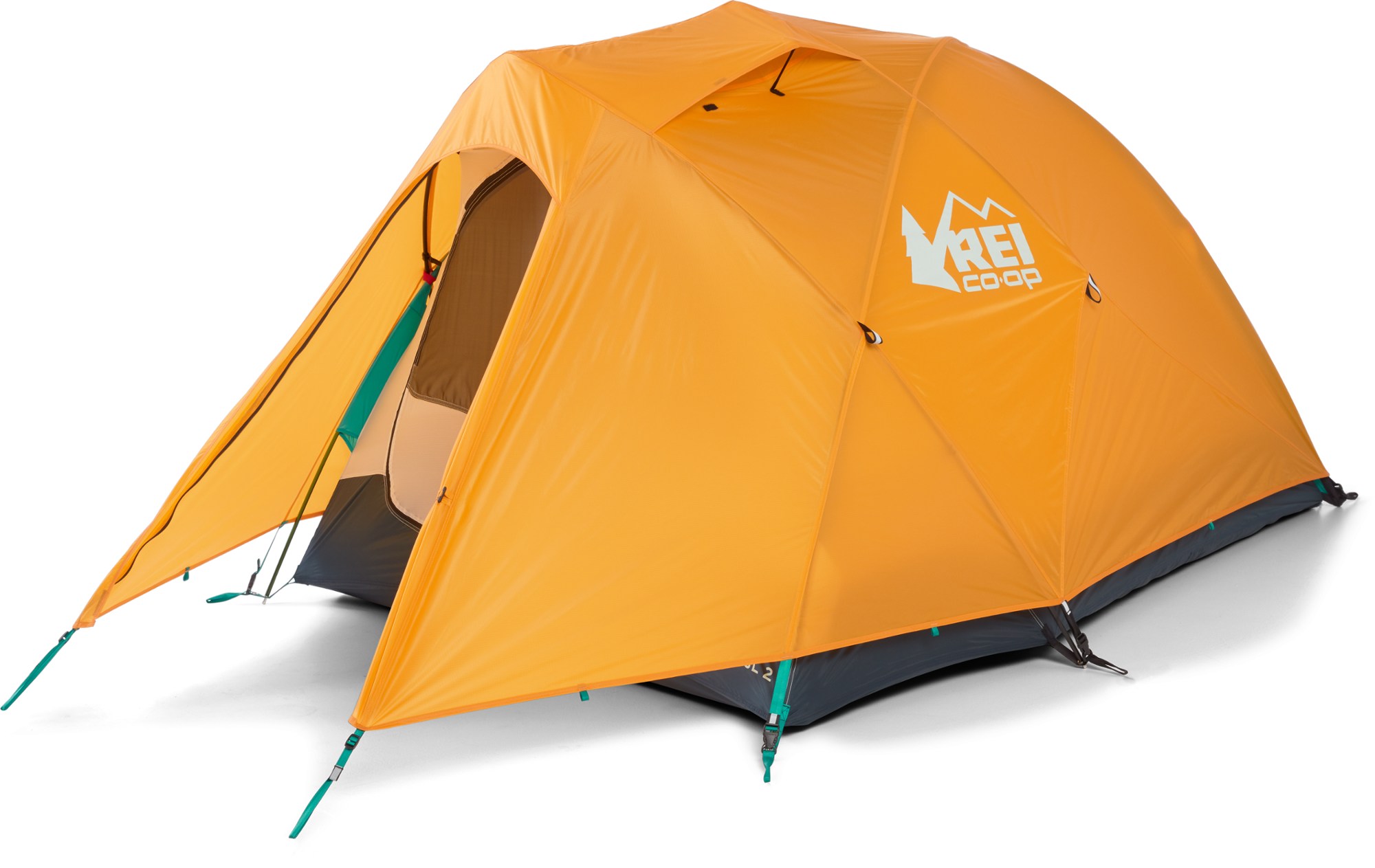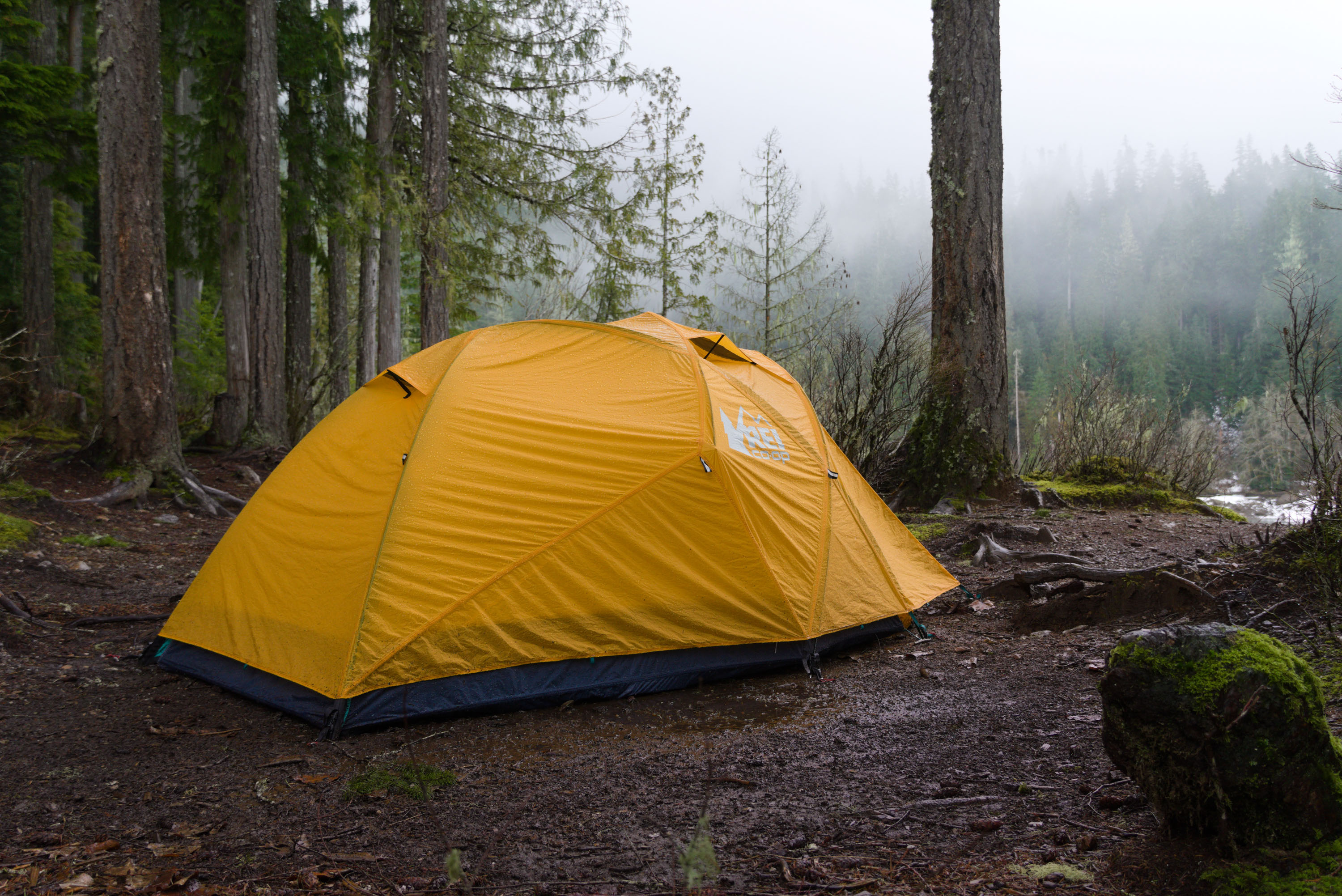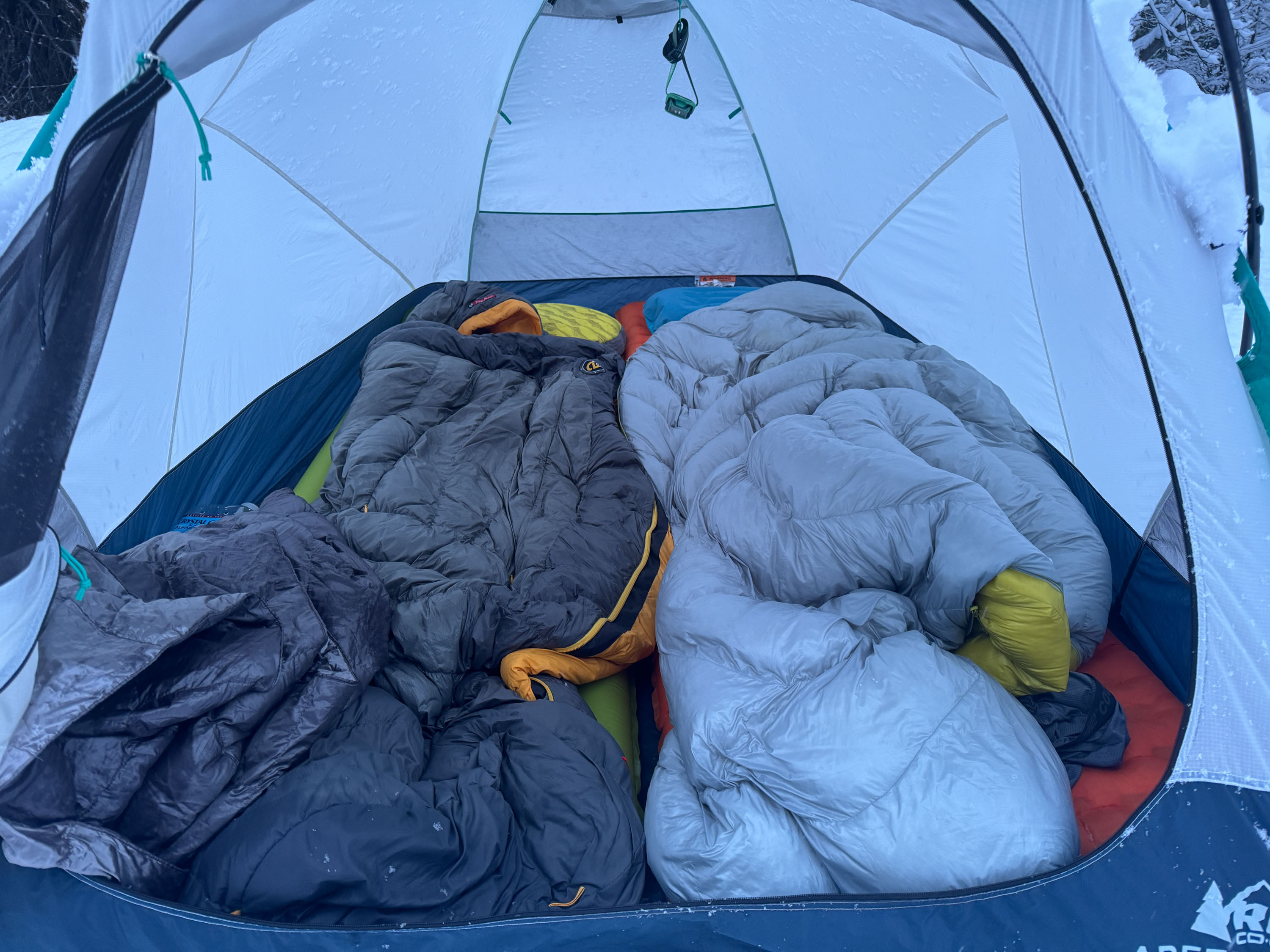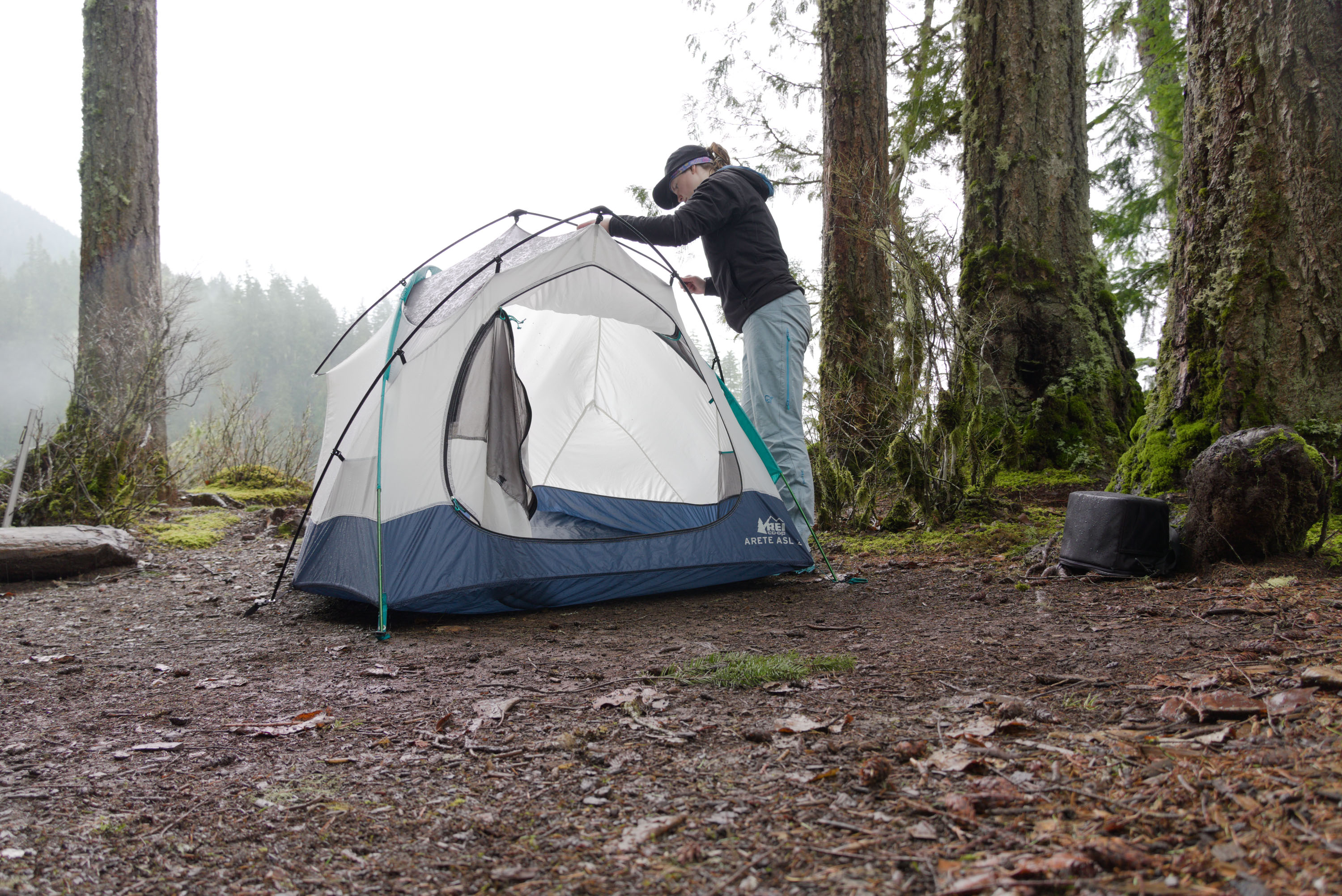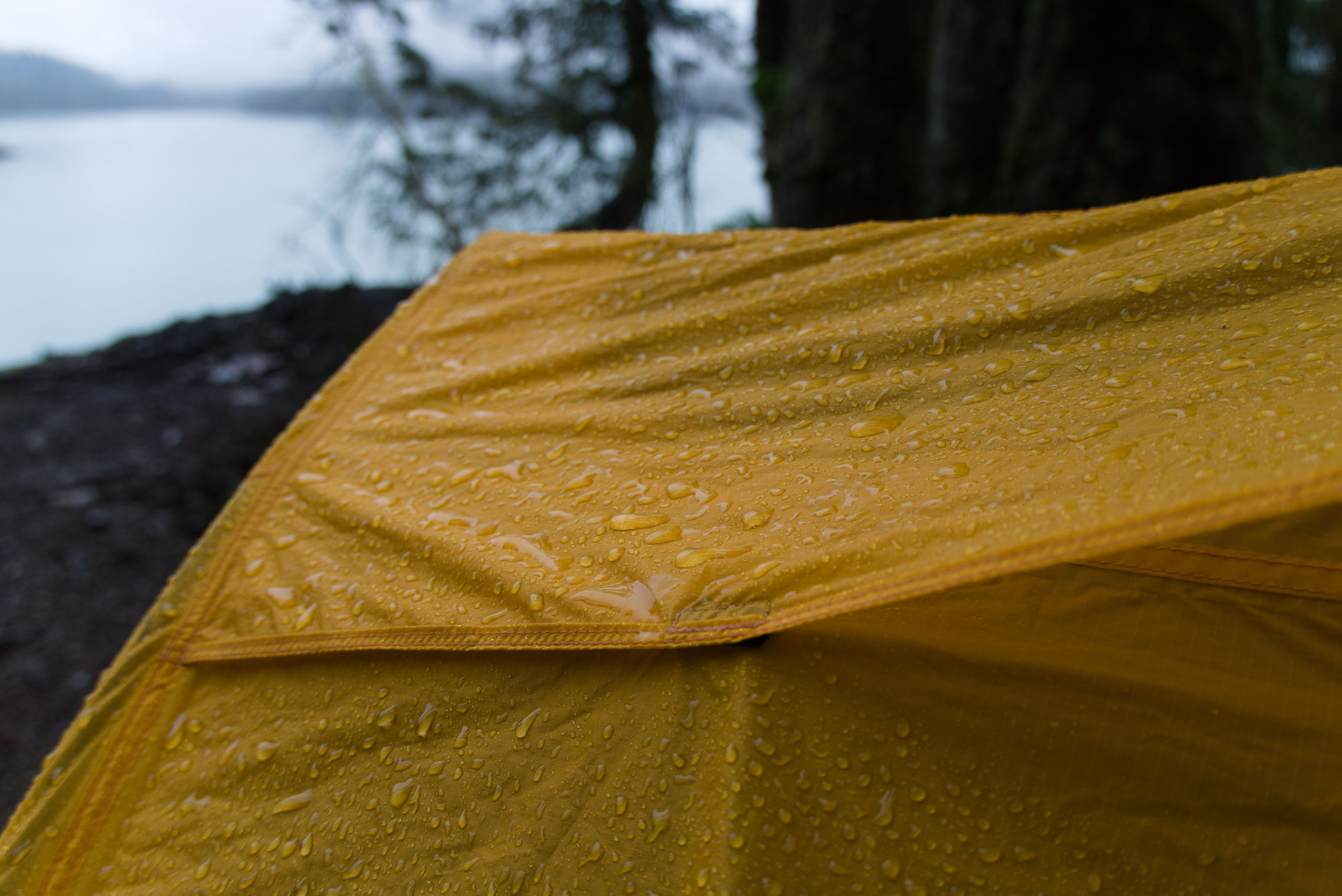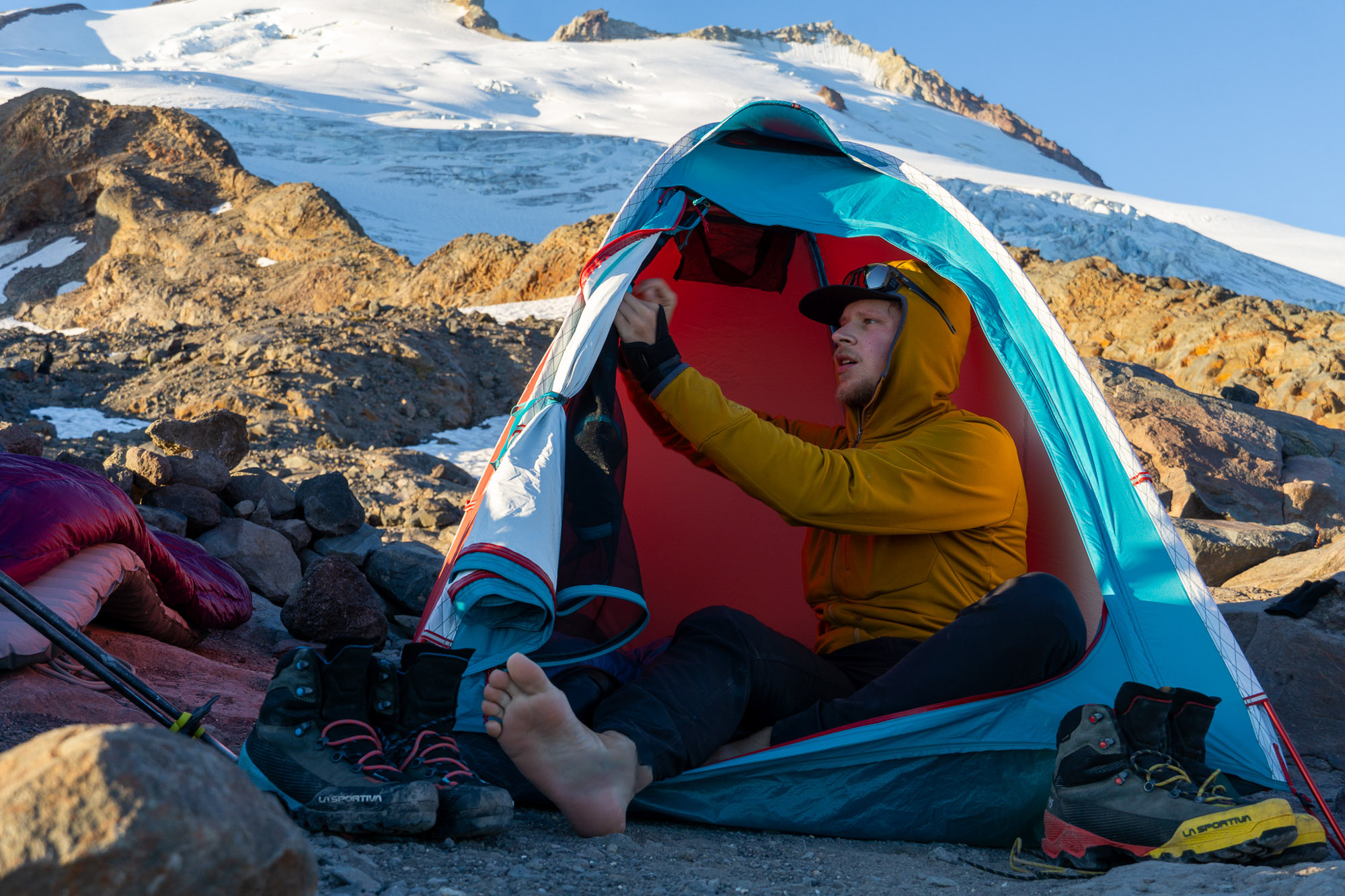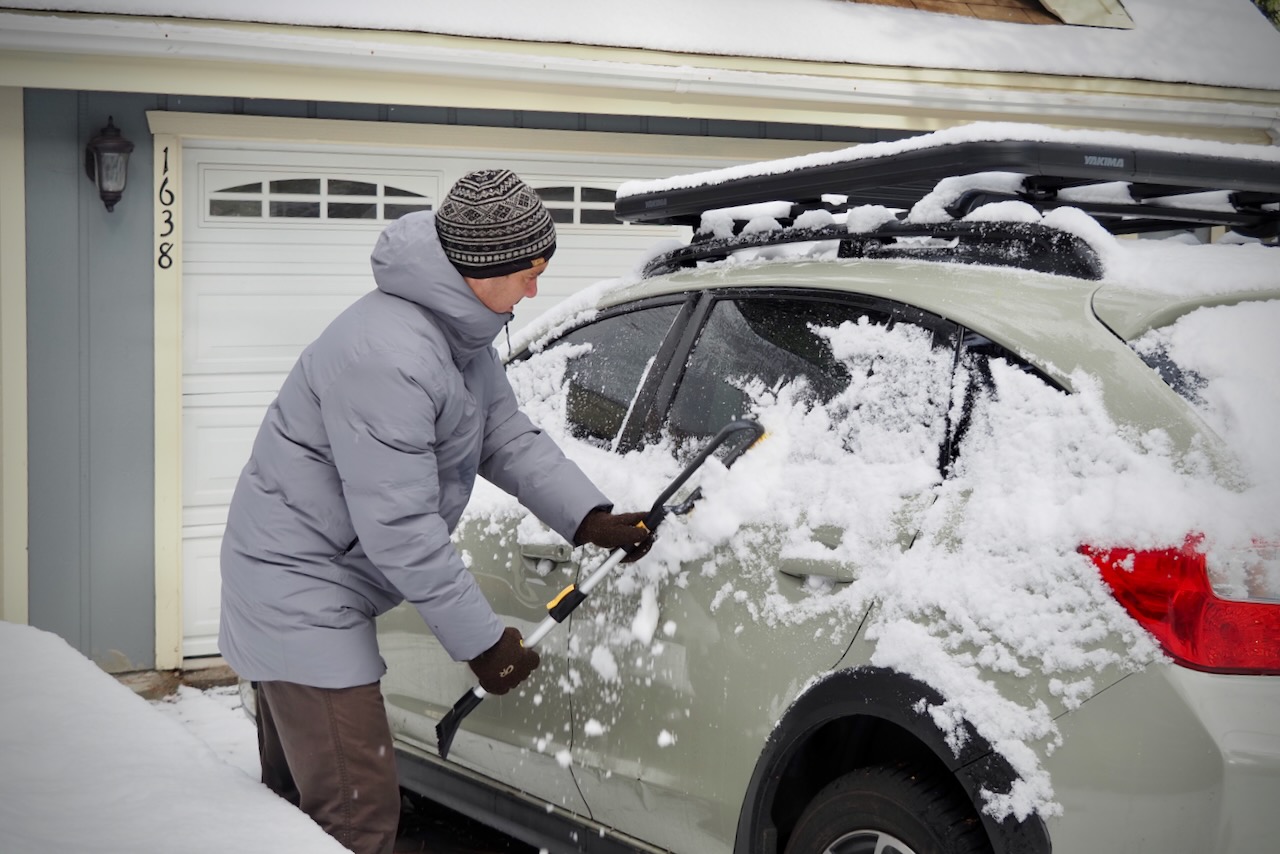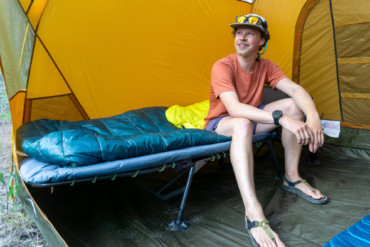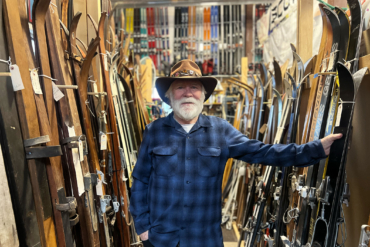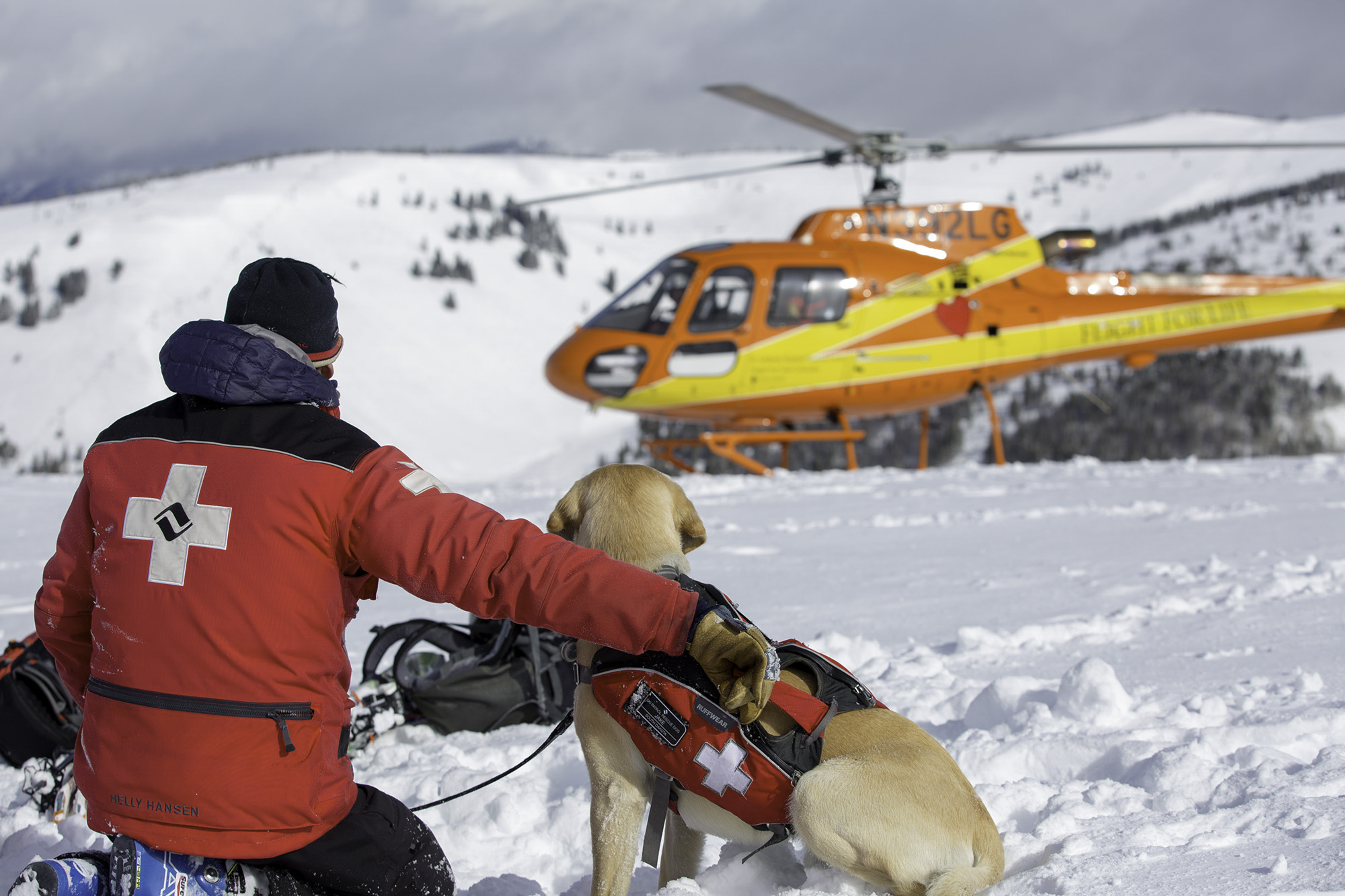The winters in Washington are known for one thing: rain. But if you’re desperate to get outside regardless (like I am), you’ll find yourself rummaging through the thickets in a steady drizzle for a place to pitch your tent (like I did).
Despite the rain, however, I was able to enjoy a cozy evening curled up with a good book in the REI Co-op Arete ASL 2 Tent, complete with the gentle pitter-patter of raindrops and the assurance that none of the wet was sneaking in.
I’m not surprised at how well this tent held up in the rain — it is, after all, an All Season Light tent (hence the name). This tent is not only designed to handle the wet and cold, but it is also adaptable to the warmer seasons, too. Unlike most four-season tents that are really only comfortable in the winter, this tent straddles the shoulder season and can be fully vented to maximize airflow when it’s warm and close itself up again when it’s cold.
Despite incessant lakeside rain, sticky-warm humid forests, and cold, snowy nights, I woke up each morning in the Arete ASL dry and ready to tackle the trail again.
In short: The REI Co-op Arete ASL tent is a great, low-cost choice for beginner campers or seasoned backpackers looking for a comfortable dwelling in uncomfortable conditions. It’s easy to set up and even easier to spend time in with its roomy interior and weatherproof materials. Simply put, it’s hard to go stir-crazy amid a tedious rainstorm in this shelter.
To learn more about the world of four-season tents, consult GearJunkie’s Buyer’s Guide to see how the Arete ASL 2 stacks up.
-
Weather Resistance
7.0
-
Living Space
7.0
-
Durability
6.0
-
Size & Weight
7.0
- Type: Mountaineering and shoulder-season backpacking
- Weight: 6 lbs., 5 oz.
- Doors: 1
- Sleeps: 2
- Floor Area: 32.9 sq. ft.
- Vestibule Area: 8.7 sq. ft.
- Height: 43"
- Walls: Double
Pros
- Budget pricing
- Easy to set up
- Comfortable and spacious
- Easy to pack
- Handles winter weather well
Cons
- Smaller vestibule
- Height is a disadvantage in wind
- Fly doesn't drop to the ground quite far enough
REI Co-op Arete ASL 2 Tent: Review
First Impressions
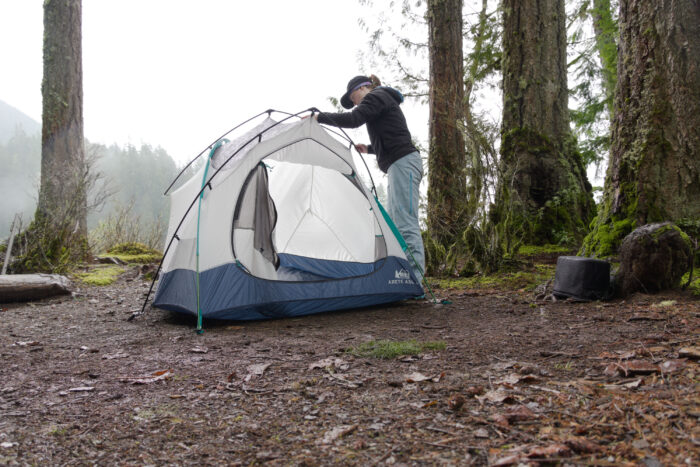
I’ve done my time dealing with bad tents — tents too small, too wet, or too complicated to set up. The REI Co-op Arete ASL 2 Tent is none of these, and has proved to be a sort of tent of all trades. Versatility is the goal of this multiseason shelter, and it’s built to tag along on those pleasant spring camping trips and bolder and colder winter outings.
In the newest update, REI focused on ensuring it is especially user-friendly and comfortable. Though some small changes were made — like rethinking where poles are required in the complete setup — it’s the little details that make this version a stronger competitor in the world of three- and four-season tents.
This last winter in Washington was especially temperate, which got me excited to investigate what really makes the Arete ASL a 3/4-season tent. Throughout the late winter and early spring months, I packed this tent for a midwinter ski-touring trip in the depths of North Cascades, as a warm dwelling on an early season rock climbing excursion, and on that incredibly wet yet cozy lakeside retreat.
Pitch(ed) Perfect
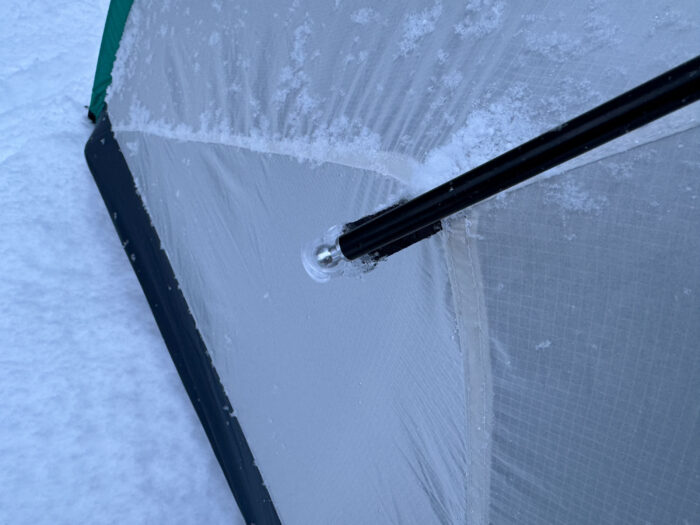
When the many pieces of the Arete ASL are laid out, it may seem like it’s a tough one to wrangle into shape, but I didn’t find that to be the case. Overall, the setup includes the tent, fly, four poles, and many stakes and guy lines. But once you start, it’s easy to see how all these parts fit.
The beauty is in the details, folks, and if you look closely, you can see that REI put a lot of thought into making this tent as easy to pitch as possible. For instance, color-coding guides users during several steps in the pitching process. The long poles have black tips that identify the end that should be fed through the pole sleeves first, and all of the guyline attachments are reflective so they’re easy to find in the dark.
I especially appreciated the attachment styles of the poles and fly. The two main poles slot into a close-ended sleeve, outdating the traditional grommet-style attachment (though, there are two at the front), and the other poles attach with easy-to-use clips. The fly is especially easy to hustle on in a downpour as it connects to the tent with simple buckles.
My partner and I enjoyed how easy it was to set up the Arete ASL as we pulled up to our crag-side campsite at midnight, groggy-eyed and desperate for sleep. Even in the pitch black, it took about 5 minutes to get this tent fully set up (one more if we remembered to toss on the fly, but that’s a story for later).
A Humble Abode With Space to Spare
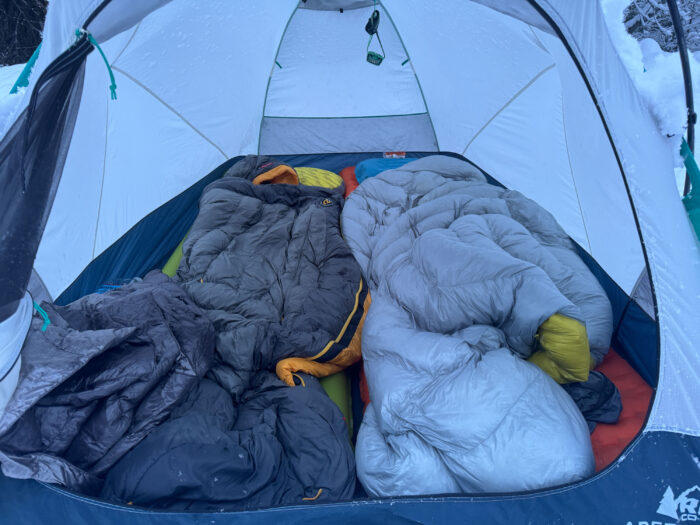
While camping lakeside in early March, I brought enough stuff to make this tent feel like home. Between my books, rain gear, and camera equipment, I moved right into the Arete ASL. Thankfully, it wasn’t a struggle to do so.
The spaciousness of this tent made it easy to move around inside and organize my belongings. The floor area in the Arete ASL is 32.9 square feet, about 3 square feet bigger than the Mountain Hardwear Outpost II, a three-season tent with a similar design. Even with two sleeping pads, my partner and I still had room to spare. It’s also 43 inches tall, which my partner, who is 6’3” tall, certainly appreciated when pulling on his pants in the morning.
The inside has several mesh pockets: two small ones at the front, one overhead, and one long one at the back. These helped store my books, as well as the many easy-to-lose stuff sacks for my camping gear. I was also able to hang a few things, like my headlamp, to the overhead hanging loops.
However, I do have one gripe: the vestibule is simply not big enough. Things got a bit muddy while camping at the lake, and I wanted to avoid tracking dirt inside. However, fully closed, I found this vestibule only had room for my muddy boots and stove, not much more. And keeping it open in the rain wasn’t an option if I wanted to keep my boots dry.
Packing It In
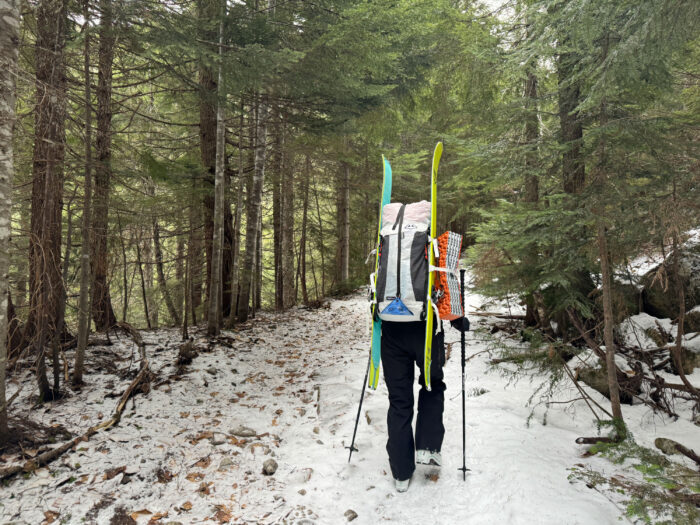
For a four-season tent, the Arete ASL is surprisingly easy to pack in. While it isn’t the lightest tent on the market, it certainly isn’t the heaviest. And in general, it fits well in a regular overnight camping pack.
While splitting the weight with my partner on our ski touring adventure made things easier, I didn’t find this tent a bear to pack for my solo overnight trips either. The tent and fly are easy to stuff, and the poles and stakes wiggled into the sides of your pack.
Packed, this tent weighs 5 pounds, 10 ounces. While there are definitely similar, but lighter tents on the market — like the MSR Access 2 which weighs about 4 pounds packed — this tent is on the lighter end for four-season tents. The Hilleberg Jannu, a four-season tent with a similar design, weighs 7 pounds packed.
Really, the Arete ASL is in the middle of the road when it comes to weight. If it helps, you can think of it this way: this tent weighs about as much as 2.5 L of water — a normal amount of water to bring along on day one of your backpacking trip.
Taking On the Elements
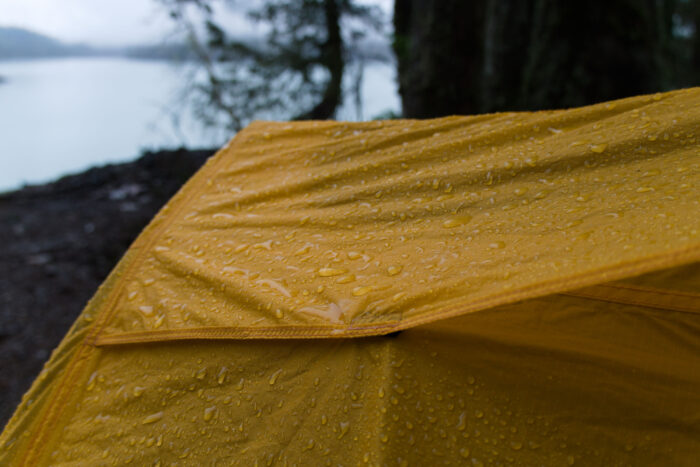
There are a few specific features of the Arete ASL that make it a great choice for inclement weather. I put the nylon fly to the ultimate rain test during my lakeside getaway. In fact, for the entirety of my trip, the rain didn’t stop for more than 30 minutes at a time. However, the inside of this tent stayed perfectly dry with the fly attached. And I never felt suffocated with that extra layer, either — the fly has covered vents on either side for air crossflow.
The tent itself isn’t too shabby of a shelter on its own, either. It’s fully closeable, so on cold nights, you can secure all the vents for extra protection. While cragside camping, my partner and I didn’t realize that we forgot to toss the fly on until we woke up to 4 inches of snow on top of the tent. While the tent was wetter than it would have been with the fly, we were amazed by how well it shed the snow through the night.
My favorite feature of this tent, however, has to be the bathtub floor. My campsite at the lake inevitably turned into a puddle, but I wasn’t aware of it until I left the tent during a break in the storm. Trust me, I checked beneath my sleeping pad more than once, but the floor design of this tent kept the standing water from leaking inside.
‘All-Season Light‘
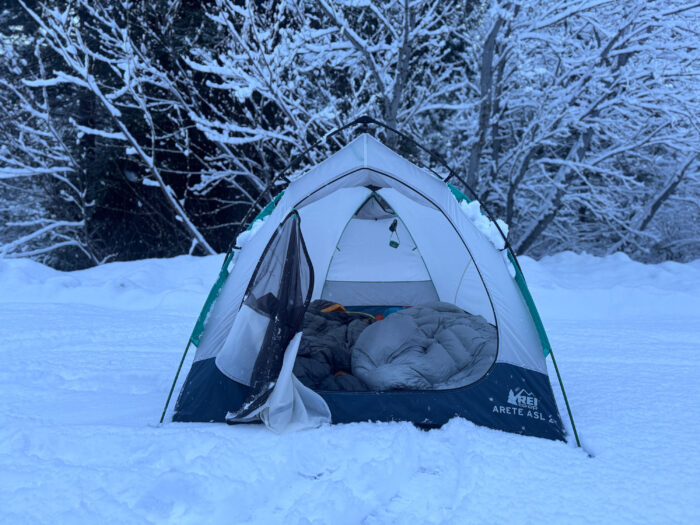
One of the most unique parts of the Arete ASL is its ability to handle diverse weather. I don’t mean just the rain and snow, but the warmer weather too. You can leave the fly home when the sun comes out and maximize cross-air flow by unzipping its vents. In fact, the door has a massive mesh window that can be opened for ultimate breathability without letting in the pesky bugs.
Although the Arete ASL is an all-season tent that can handle the cold, it’s important to remember that it isn’t an expedition-style tent and is not meant to handle extreme mountain weather. I could see this tent having an especially hard time in extra windy conditions due to its height. Expedition-style tents are better built to handle intense conditions because they have a lower profile and are made with more durable materials.
Though I wouldn’t recommend you climb Mt. Everest with this tent, it will handle the diverse conditions in the lower 48.
Bang for Your Buck
Depending on the state of your wallet, the price tag on the Arete ASL might be the most enticing part — all in all, this tent will cost you $450 out the door.
Compared to similar designs, the cost of this tent is mere chump change. The similar Mountain Hardwear Outpost II will run you $700, and that’s just a three-season tent. Big-name four-season tents, like those from the Hilleberg lineup, will run you closer to a grand.
In my opinion, the price point of this tent makes it an especially great option for someone just getting into overnight backpacking. Considering how well it holds up against the elements, how comfy it is, and how easy it is to pack and set up, this price is a steal.
The only thing not included in this purchase is a footprint, but honestly, with that bathtub floor, it’s not the worst thing in the world to need to buy separately. You can really do without it on most excursions.
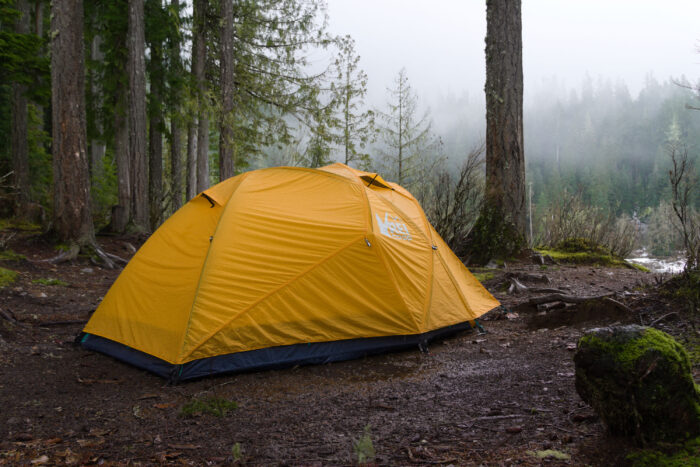
REI Co-op Arete ASL 2 Tent: Conclusion
Perhaps you’re a bit speculative about what exactly makes the Arete ASL both a three- and four-season tent. I’ve spent a few nights in this tent pondering the exact same thing, but I’ve narrowed it down to this. You take a three-season tent, one that’s lightweight and comfortable in the warm, and you give it a few perks like added zippered ventilation, additional supportive poles, and a reliable fly, that makes it gosh-darn resilient to the rain, snow, and cold.
Whether you’re just getting into camping and are looking for a cheap way to dip your toes into the water, or you’re a longtime woods sleeper wanting an adaptable tent for those in-between season conditions, this tent is a seriously good option.
At the end of the day, let the REI Co-op Arete ASL 2 Tent be the excuse you need to get outside and alleviate your winter blues. In my opinion, there’s not much that the gentle chatter of rain on a tent fly can’t cure.

